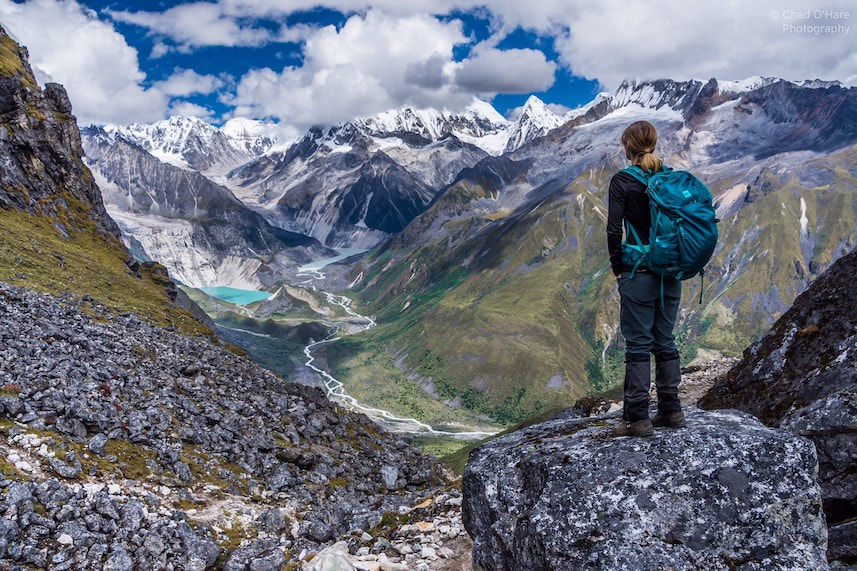|
The name Kashmir stirs exotic images of spices and mountains, of a far-off land caught in a political tug-of-war and of a culture balanced between mountain purity and hectic urban bustle. My husband and I wanted to see it for ourselves. Although the Canadian Government’s travel advisory warned against all travel to Kashmir, the current situation seemed calm. Before heading to this northwestern union territory, we checked with a few local contacts who all confirmed that besides a lot of security checkpoints and military presence, they felt comfortable going there. Plus we wouldn’t be trekking, which we figured should lower the chance of needing to use our travel insurance - coverage is void if travelling to a location against our government’s advice. So, with a window of opportunity, we went. And I can whole-heartedly say, I am glad we did.
~ If you are considering going, please check the current situation and your own government’s travel advisory to make an informed decision. ~
0 Comments
To read my original blog from 2018, including the Attari-Wagah border ceremony, go to: https://www.bynancyohare.com/travelblog/high-kicking-border-guards
I tried to gently close our room’s heavy wooden door, but its shrill squeal shattered the silence of the guesthouse. “Did the local wildlife wake you up, too?” our friend casually asked. It turned out that minutes before, a mouse had leapt from its crevasse in the stone wall and landed in a bellyflop squarely on her face." Snowy peaks came into view. Beneath them, layers of terraced mountains blurred. I could do nothing to prevent the tear that filled my eye nor the next one that pushed itself out.
Trekking the Khangchendzonga Circuit Route in Sikkim’s Himalaya Slabs of ice rose like crooked steps that led to a snow-crusted palace. Its frozen walls towered over surrounding peaks, most of which were giants themselves standing nearly seven thousand metres high. Although there was no real palace on Khangchendzonga’s summit, its shape and grandness appeared to reign over the landscape. It is a sprawling mountain often hidden under clouds or seemingly lost in a fog. At 8,586 metres, Khangchendzonga—also spelled Kanchenjunga—ranks the third highest mountain in the world.
Mongolia's desert is more than dry sand and endless dunes. This is my adventure in a hidden canyon with stunning colours and a vibrancy all its own.
Saxual trees—the only variety able to grow in such a dry climate—struggle. Remnants of branches tangled low to the ground remained, contorted in their final search for a drop of water. Those plants able to endure sprouted tiny green leaves among the otherwise withered skeletons of trees bleached by the sun.
Written in dedication to World Oceans Day after visiting this sea-turned-to-desert from its Uzbekistan shores in 2019. Thirty years ago, my eyes would have been blinded by the reflection from the Aral Sea’s waters. Today, they stared at sand and saxual bushes that merged into a hazy horizon no matter which direction I turned. Our Landcruiser had been bouncing along a four-wheel-drive track for nearly ninety minutes. We were driving on the seabed, or what remained of it. A rusted-out bus rested upside down and scorched at the side of the road near where we had left the Ustyrt Plateau and entered the Aral Sea’s former seabed. Since then, I had seen little else beyond the occasional gas rig or pipeline marker - the latest business of choice in a fishing region erased of its sea.
These are some of the most unusual festivals from around the world! Discover Georgia's Svaneti Towers and other hidden wonders in this beautiful region. I wrote this after walking along a narrow street between ancient stone houses in the town of Mestia. Towers built to resist the enemy rose around me. Not consecutively but scattered across the valley, each attached to a home built from the same worn blocks of stone. Time roughened their edges, rain nibbled their sandy grout and flashbacks of former raids hid between nooks and melted into shadows. Today, yellow flowers painted a tapestry at the foot of certain towers while white-blossomed trees soothed their memories, lifting troubles of past generations lightly in the breeze.
The towers stood for resilience. Resilience of the town’s ancestors and strength of community that still filters through neighbourly life. Koshkebi (“stone towers”) define the Svaneti region of northern Georgia, yet my eyes were transfixed by what lay lower to the ground. |














 RSS Feed
RSS Feed